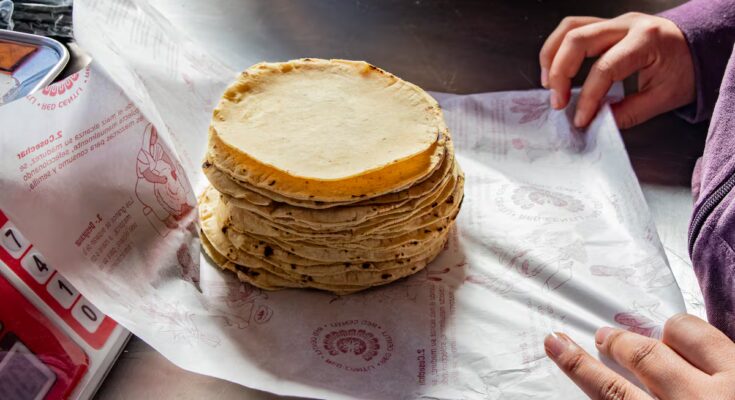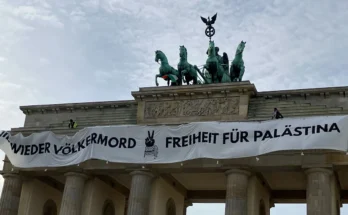“Which tortilla shop?” says a young man who sells car accessories, mats and steering wheel covers in one of the corners of Utopia Libertad, in Iztapalapa, east of the capital. He doesn’t even know there’s a new place. The Utopia is a cultural, sporting and recreational space of 60,000 m2 and is located behind the Oriente Prison. At the end of September, the head of government, Clara Brugada, inaugurated the first indigenous corn tortilla factory in Mexico City. The company shares ownership of six hectares with the prison complex, but very few people knew about it. It has only one entrance. Not even the young man with the carpets knows where he is. “I think you can enter from there,” he says, pointing to the prison entrance. You are wrong. Access to the penitentiary is via Reforma Avenue; in Utopia, near the Nile River; two opposite points. “There are many neighbors who don’t know we exist,” says Francisco Contreras (Mexico City, 41), a corn producer in San Miguel Xicalco, in the mayor’s office of Tlalpan, and director of the tortilla factory that is less than two months old.
“Our biggest problem is spread. I would say 90% of the community doesn’t know we’re here,” says Contreras, who believes it would be better to knock door to door, because establishment propaganda, whose functioning depends on the city government, has focused on the Internet and doesn’t seem to be working. After opening, they sold 200 kilos a day, as well as sopes, tlacoyos and gorditas. But 37 days later they only sell 80 kilos.
The recent protests by corn producers against the Executive over cereal prices have not affected Contreras. When they inaugurated the tortilla factory on September 23, the head of government promised to pay 16 pesos per kilo of wheat (16,000 pesos per ton) and she kept her promise. Protesting producers across the country are calling on Claudia Sheinbaum’s administration to pay 7,200 pesos per ton. What worries him are sales.
The facade of the tortillería is brown and is located near the prison walls. In white letters, written in capital letters, it reads “Native Corn Tortillería.” On the wall there are three windows; The one on the left is where they ship the product, the rest displays meter-high brochures with information on how to prepare tortillas or what their nutritional properties are, a topic that Contreras considers important.

“Mexican or artisanal products have been discriminated against a lot,” he says. He thinks that the spread of the restaurant must be accompanied by social awareness work, because the narrative is that the tortilla makes you fat or causes obesity. “That’s true, but this is generated from flour tortillas, from processed tortillas. On the other hand, ours has a lot of nutrients, antioxidants and pigmentation of corn. The consumer lacks information.” While Contreras doesn’t see the tortilla shops surrounding Utopia as competitors, because he’s confident in their product, he recognizes that people prefer to go buy them at the location closest to them. And the fact that the huge property has only one entrance is a problem for the consumer. “Who will want to walk a mile when they have one 50 yards away?” says the man, who was contacted by the government to open the shop but without being able to decide where and how he would operate.
Contreras repeats several times the theme of the diffusion and dismantling of prejudices about the tortilla. “I just participated in a discussion at the Iztapalapa Metropolitan Autonomous University (UAM), together with a doctor, on the topic of discrimination (of corn). She said that they are only talking to nutritionists because they are the first to eliminate the tortilla from the diet,” he says dismayed.
Francisco Contreras has been dedicated to the field since he was six years old; His parents and grandparents have always been corn producers. For eight years he has dedicated himself to the transformation of cereals. As for the colors of corn – blue, red, yellow, pink, black – his favorite is red. He says it has a lot of potential, but it’s not very appealing to the eye because it darkens the tortilla and makes it look dirty. “Before, the kids said we put chili pepper in the tortilla, but no. It’s really delicious,” he says with a shy smile.



